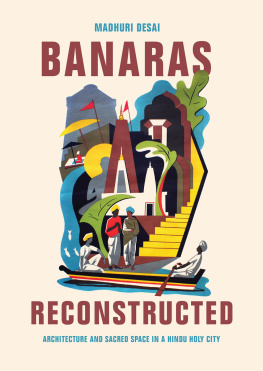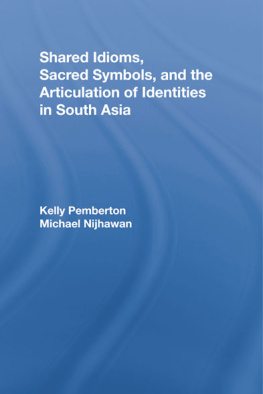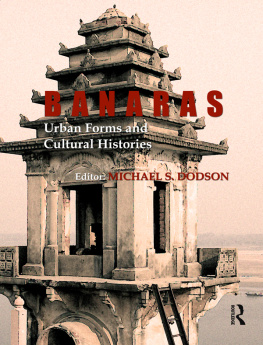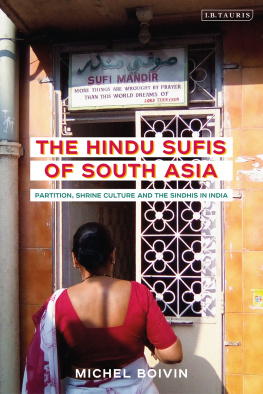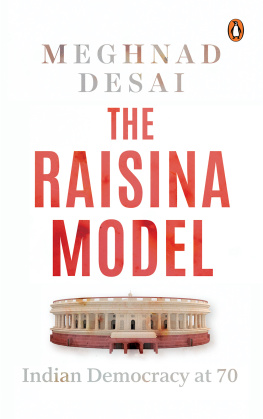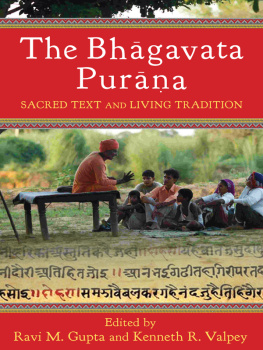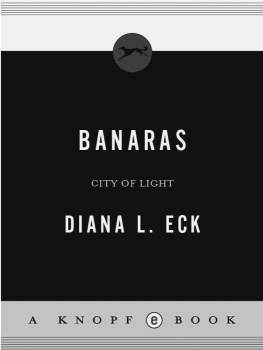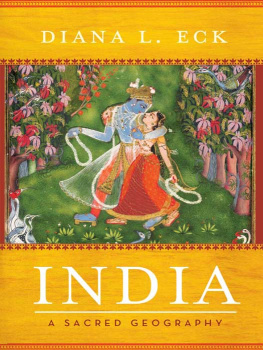

Padma Kaimal
K. Sivaramakrishnan
Anand A. Yang
SERIES EDITORS
BANARAS RECONSTRUCTED
ARCHITECTURE AND SACRED SPACE IN A HINDU HOLY CITY
Madhuri Desai
UNIVERSITY OF WASHINGTON PRESS
Seattle and London
Banaras Reconstructed was made possible in part by a generous grant from the George Dewey and Mary J. Krumrine Endowment, administered by the Department of Art History and the College of Arts and Architecture at the Pennsylvania State University.
2017 by the University of Washington Press
Printed and bound in the United States of America
Composed in Warnock, typeface designed by Robert Slimbach
21 20 19 18 175 4 3 2 1
All rights reserved. No part of this publication may be reproduced or transmitted in any form or by any means, electronic or mechanical, including photocopy, recording, or any information storage or retrieval system, without permission in writing from the publisher.
All photos by the author unless otherwise credited.
UNIVERSITY OF WASHINGTON PRESS
www.washington.edu/uwpress
LIBRARY OF CONGRESS CATALOGING-IN-PUBLICATION DATA
Names: Desai, Madhuri (Madhuri Shrikant), author.
Title: Banaras reconstructed : architecture and sacred space in a Hindu holy city / Madhuri Desai.
Description: Seattle : University of Washington Press, 2017. | Series: Global South Asia | Includes bibliographical references and index.
Identifiers: LCCN 2016050496| ISBN 9780295741604 (hardcover : alk. paper) | ISBN 9780295741994 (pbk. : alk. paper)
Subjects: LCSH: Hindu architectureIndiaVaranasi (Uttar Pradesh) | Sacred spaceIndiaVaranasi (Uttar Pradesh) | Architecture and societyc (Uttar Pradesh) | Varanasi (Uttar Pradesh, India)Buildings, structures, etc.
Classification: LCC NA1508.V37 D47 2017 | DDC 720.954DC23
LC record available at https://lccn.loc.gov/2016050496]
The paper used in this publication is acid-free and meets the minimum requirements of American National Standard for Information SciencesPermanence of Paper for Printed Library Materials, ANSI Z39.481984.
For my parents
and for Nandu
CONTENTS
ACKNOWLEDGMENTS
So many people have helped me during the course of this project. My colleagues in the Department of Art History at the Pennsylvania State University, especially Craig Zabel, Nancy Locke, Elizabeth Smith, Robin Thomas, Brian Curran, and Sarah Rich, were staunchly supportive and encouraging. The late Kumkum Chatterjee was a lively and insightful interlocutor. My teachers at the University of CaliforniaBerkeley gave me the foundational tools to become an architectural and urban historian. Professor Stephen Tobriner has been a generous advisor and steadfast mentor as I developed this project, as well as in other areas of academic life. Professors Greig Crysler and Lawrence Cohen gave me critical guidance and encouragement. Professors Vasudha Dalmia, Muzaffar Alam, and Kathleen James-Chakraborty were thoughtful and unstinting with their advice. Professor Nalini Thakur consistently provided help and direction besides imparting her infectious and discerning passion for all things historical. At the University of Washington Press, Ranjit Arab believed in this book from the very beginning, and I am grateful to him as well as to Larin McLaughlin, Margaret Sullivan, Whitney Johnson, Beth Fuget, and my editor, Amy Smith Bell. My thanks also to the editors of the Global South Asia series as well as the two anonymous reviewers for giving the manuscript a close reading and for their many suggestions for its improvement.
Many institutions and individuals have supported this research by providing archival and visual source material. My thanks to the staff of the National Museum (New Delhi), the National Archives (New Delhi), the British Library (London), the Bancroft Library (Berkeley), the Royal Academy (London), the Maharaja Sawai Mansingh II Museum (Jaipur), and the Maharana of Mewar Charitable Foundation and Research Institute (Udaipur). In Banaras, my sincere thanks to His Highness, Maharaja Anantnarain Singh. My thanks also to Dr. T. K. Biswas, Dr. R. P. Singh, Dr. Lakshmi Dutt Vyas, J. P. Pathak, and all the management and staff at the following institutionsBharat Kala Bhawan, Regional Archives (Banaras), Sampurnanand Sanskrit Library, Saraswati Bhandar and Purana Department (Ramnagar), the Jangambadi Muth, the Kumarswamy Muth, the Annapurna Chattra Trust, the Holkar Trust, the Ramakrishna Mission, Nagari Pracharini Sabha, Abhimanyu Pustakalaya, and the Carmichael Library.
Special thanks are due to Rai Anand Krishna, Dr. O. P. Kejariwal, Dr. Dhirendranath Singh, Dr. Om Prakash Sharma, Dr. Bhanushankar Mehta, Dr. Nilkanth Purushottam Joshi, the Peshwa family, the Sahi family, Shashank Singh, the Shah family of Azmatgarh palace, the Basu family, Swami Jaikishan Puri, Abdul Batin sahib, Sadiq Ali sahib, Sanghamitra Sarkar, Mohammad Khalil, Aftab Ali, Istiyak Ali, Al Qamar, Klaus Rotzer, Jyotima, M.B. Bajre, K. S. Khushwaha, Harishanker Singh, the Bharadwaj family, and the Agarwal family of the Banaras Art Gallery. In Allahabad, my thanks to Dr. O. P. Srivastava, Dr. Ghulam Sarwar, and Rajesh Sonkar of the Regional Archives, and Dr. Shailaja Pandey of the Ganganath Jha Institute. I am grateful also to Dr. David Curley, Dr. Stewart Gordon, David Moffat, Judy Loeven, and Cynthia Col.
My research assistantsNanditha Veeraraghavelu, Gretta Tritch Roman, and Rohan Haksarwere invaluable as well as technically proficient in creating maps and architectural drawings, and Jennifer Shontz shared her aesthetic judgment and graphic skills. Any remaining errors or lacunae are entirely mine. Initial research funding was provided through the IDRF program of the Social Science Research Council. Additional support was provided by a fellowship from the Paul Mellon Centre for British Art, London, and research grants provided by the College of Arts and Architecture and the Institute for Arts and Humanities at the Pennsylvania State University. Publication support was provided through generous grants from the George Dewey and Mary J. Krumrine Endowment, administered by the Department of Art History and the College of Arts and Architecture at the Pennsylvania State University.
Shikha Jain and her family have helped me in innumerable ways, and my father-in-law, Mohandas Desai, was untiring as he acquired editions of rare Sanskrit texts on my request. My family has sustained me in this research over the years, especially my late father, Shrikant Malhar Nandgaonkar; my mother, Padma Nandgaonkar; and my brothers, Ujjval Nandgaonkar and Girish Nandgaonkar. I am grateful to Dad and Ujjval for their stoic and unwavering support. I am forever indebted to Girish for his unconditional faith and active assistance. I am grateful for Moms intellectual intereststhey have molded and shaped my own. Although Dad left us all before this book was published, his enthusiasm and indomitable spirit have sustained its completion. My husband, Nandkishore Desai, has been a source of strength and always in my corner; without his support this book would not have become reality. Much love and heartfelt thanks to you all.
BANARAS RECONSTRUCTED
INTRODUCTION
THE PARADOX OF BANARAS
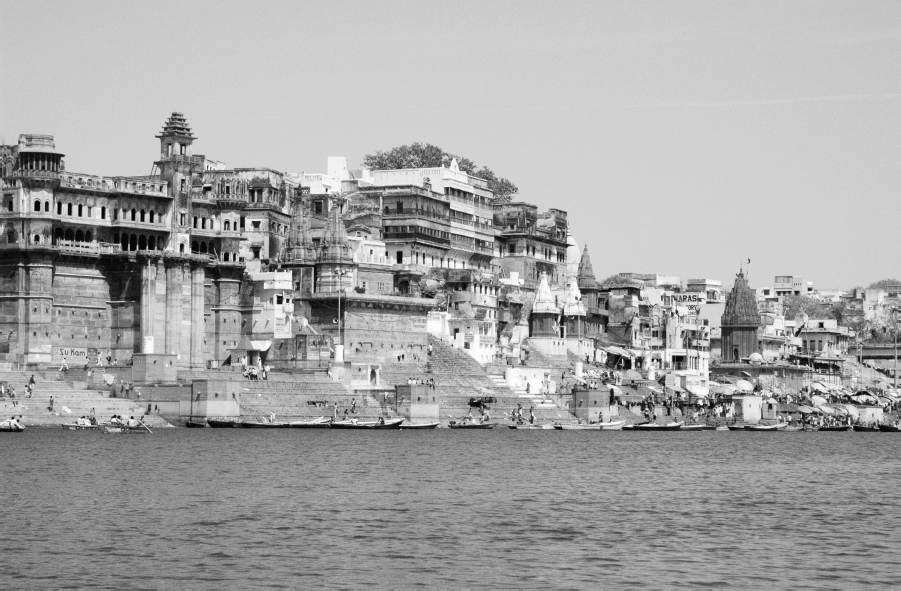
FIG. I.1 Riverfront at Banaras.
M OST visitors to the north Indian pilgrimage center of Banaras (also known by the names Kashi and Varanasi) expect to find a city of ancient temples and ritual sites along the sacred Ganges River (), and the citys skyline is punctuated by two visually dominant, seventeenth-century mosques. Kashi may be an ancient site, but it is a reconstructed Banaras that contemporary pilgrims and visitors encounter. This book investigates the circumstances of this regeneration, through the motives and actions of significant historical actors.
Next page
